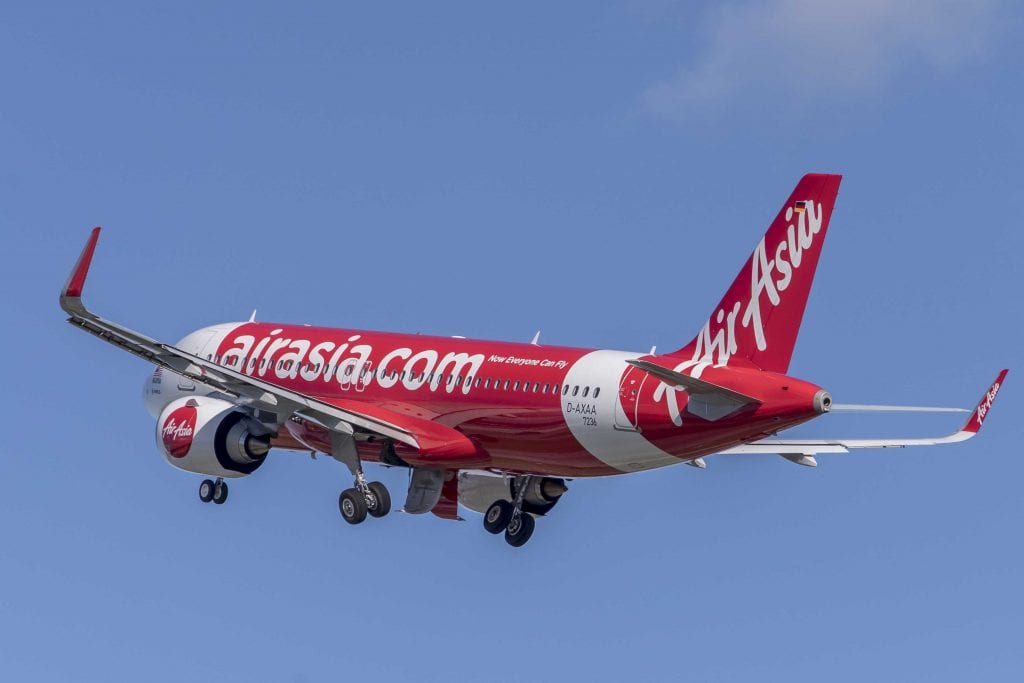The company that owns AirAsia, Capital A, posted a $6 million net profit in the first quarter. Detailed financial results for just the airline were not disclosed, other than $500 million in revenue and roughly $115 million in earnings before interest, taxes, depreciation, and amortization (EBITDA). In the same quarter a year ago, when many Asian markets were still subject to heavy Covid-related travel restrictions, AirAsia’s airline operation suffered about $60 million in EBITDA losses.
All major restrictions are now gone, and AirAsia is enjoying a strong revival in travel demand. The carrier has operations in Malaysia, Thailand, Indonesia, and the Philippines, with a combined 157 aircraft at the end of March. That’s still below 2019 levels, but a full fleet recovery is targeted by the third quarter. It aims to end the year with 219 planes, nearly all Airbus narrowbodies. Airbus counts AirAsia as one of its largest customers, entitling the carrier to favorable pricing and other benefits. It currently has 362 A321neos on firm order, though many were pushed back for delivery into the 2030s. AirAsia will only take two of the new A321s next year, followed by 13 in 2025. It is currently negotiating to lease some additional aircraft for delivery in 2024.
In November, Capital A gave an update on its reorganization plan, something the Kuala Lumpur stock exchange requires of financially distressed companies. The intention is to move Capital A’s airline business to its sister airline AirAsia X, originally founded as a low-cost longhaul carrier. Capital A will thereafter be rebranded as an aviation services and digital group, engaged in activities like maintenance, cargo, loyalty, and mobile app distribution. In November, it said: “Capital A expects to complete the implementation of the regularization plan by July 2023.”
In its earnings report for the quarter, AirAsia said its airline in Thailand enjoyed the highest load factors across the group, reaching 92 percent. Routes to China were notably strong, and the group plans to have all its pre-pandemic China routes back in operation by November. Keep in mind that the first quarter is peak tourism season for much of Southeast Asia. It also features the Lunar New Year holiday, a peak travel period across much of East Asia.
According to Cirium Diio schedule data, Kuala Lumpur and Bangkok’s low-cost airport Don Mueang are by far AirAsia’s busiest airports. Next on the list are Manila’s main airport, Singapore, and the Malaysian cities of Kuching and Kota Kinabalu. By country, AirAsia’s busiest markets by scheduled seats this quarter are Malaysia, followed by Thailand, Indonesia, Philippines, Singapore, China, Vietnam, and India. AirAsia previously operated a small airline in Japan, as well as an Indian carrier slated to join Air India. It’s at times looked at launching ventures in markets like China, Vietnam, and Cambodia as well.
In reporting Capital A’s first-quarter results, founder Tony Fernandes said in a statement: “It is gratifying to see the resurgence of travel drive the recovery and subsequent growth of our aviation business while uplifting all our other business segments in tandem. This is a testament to the sustainability and long-term viability of the ecosystem we have built.” He added that lower fuel and maintenance costs are helping the airline as it builds back to pre-Covid capacity. “Our average fare and RASK [unit revenue] have surpassed 2019 levels, while our passenger statistics are fast recovering to pre-pandemic levels.”
Fernandes spoke with Skift’s Peden Doma Bhutia in January, outlining his vision for Capital A and the wider AirAsia group.





